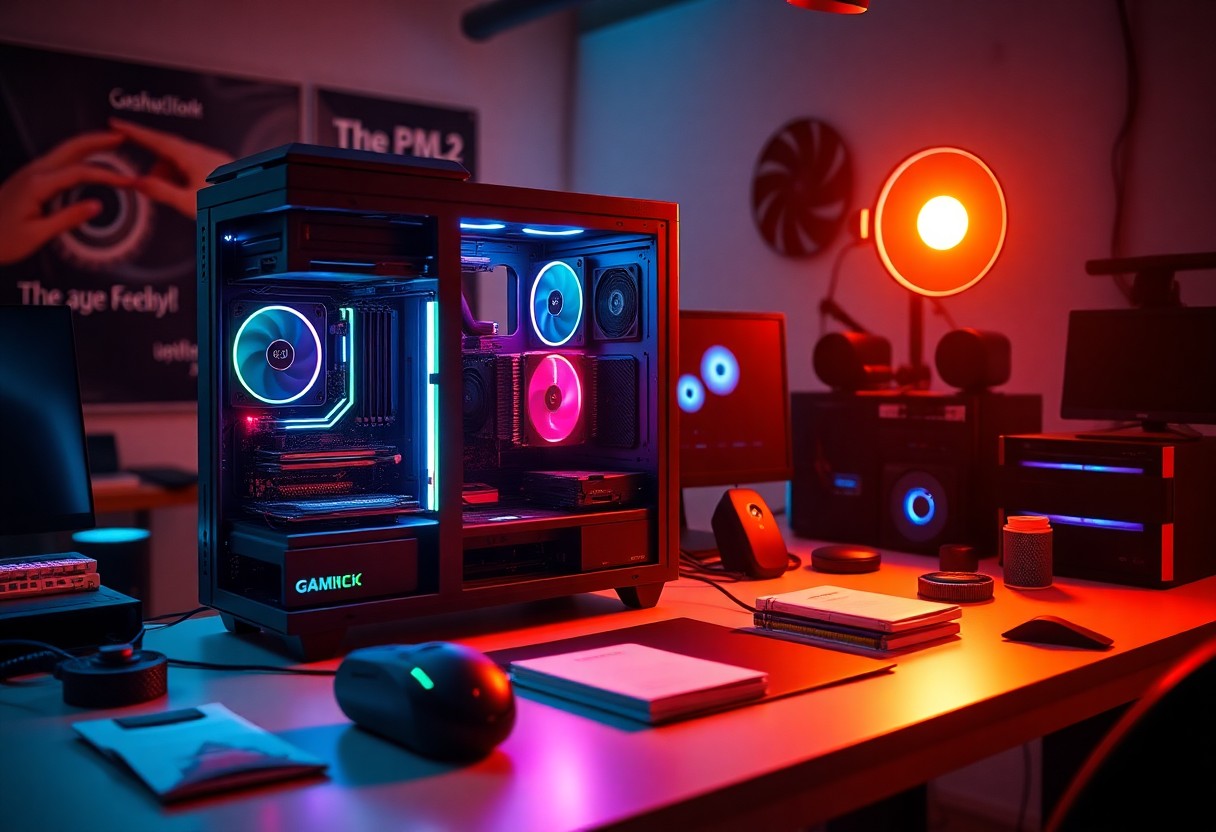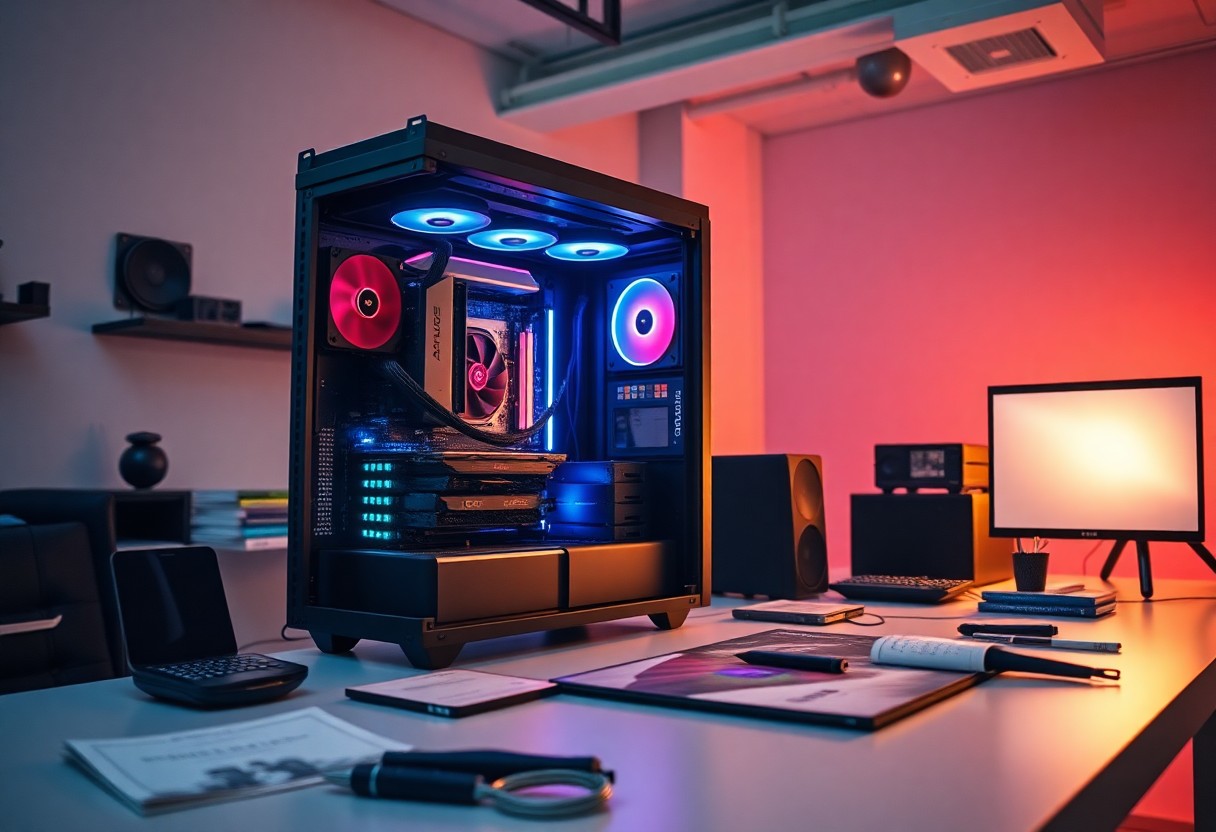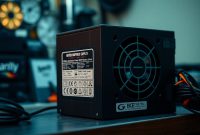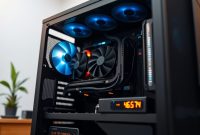Most gamers know that building your own gaming PC can offer superior performance and customization compared to pre-built options. In this step-by-step guide, you will learn how to choose the right components, assemble them, and set up your new powerhouse for a seamless gaming experience. From selecting the latest graphics cards to optimizing your system for peak performance, get ready to examine the exciting world of PC building tailored to 2025’s advancements in technology.
Understanding PC Building Essentials
To successfully build a gaming PC, you need to grasp some fundamental concepts. Understanding the purpose of each component, how they interact, and the latest technologies is vital for creating a system that meets your gaming needs. This knowledge will empower you to make informed decisions during the building process and ensure your PC functions optimally for years to come.
Key Components of a Gaming PC
Little do many know, a gaming PC comprises several key components that work together to deliver an improved gaming experience. These include the CPU, GPU, motherboard, RAM, storage devices, power supply, and cooling solutions, each serving a unique role in enhancing performance and graphics quality while ensuring system stability.
Choosing the Right Hardware
Components of a gaming PC are available in a myriad of specifications and features, making your hardware selection critical to performance. It’s vital to consider aspects such as compatibility, brand reliability, and future upgrade potential when you pick out each part. An informed choice ensures you build a balanced system that meets your gaming demands without unnecessary bottlenecks.
To choose the right hardware, start by determining your budget and performance expectations. Research popular brands and models to assess their performance benchmarks and user reviews. Look for compatibility between components, especially the motherboard and your selected CPU and GPU. Don’t forget to factor in future-proofing elements, like allowing for additional RAM slots or upgraded power supplies to accommodate more powerful components later on. This attention to detail will ensure you create a gaming rig that remains capable and relevant for years to come.
Planning Your Build
Clearly, planning your build is an crucial first step towards creating a gaming PC that meets your expectations and gaming aspirations. You need to consider factors like performance, compatibility, and future upgrades. Taking the time to plan will help you make informed decisions throughout the building process, ensuring a cohesive and efficient setup tailored to your gaming style.
Setting a Budget
There’s no getting around the importance of setting a budget when building your gaming PC. The range of components available varies widely in price, and establishing a budget up front will help narrow down your options. Consider not just the initial cost but also potential future upgrades and how much you’re willing to invest in a powerful gaming experience.
Assessing Your Gaming Needs
Planning your gaming needs starts with identifying the types of games you play and the performance levels you desire. Are you into high-end graphics and demanding titles, or are casual games more your style? Establishing your typical gaming habits will help guide your choices regarding the necessary hardware, ensuring that your build is tailored to your specific gaming preferences.
Understanding your gaming needs also involves taking into account factors like resolution, frame rates, and the genres you enjoy. If you’re an avid gamer who plays graphically intensive games or engages in competitive online play, you’ll likely require more powerful components. Conversely, if your gaming is more casual, a mid-range build may suffice. Clarifying these aspects will help you choose the right CPU, GPU, and other components that align with your gaming style and ensure a smooth and enjoyable experience.
Building Your Gaming PC
There’s a unique satisfaction in assembling your own gaming PC. It allows you to customize, optimize, and create a machine that perfectly fits your gaming needs. By following a structured approach, you can ensure that all components work harmoniously together, delivering an exceptional gaming experience.
Step-by-Step Assembly Process
To help you navigate the assembly, here’s a simplified breakdown of the process:
| Steps | Details |
| 1. Prepare your workspace | Set up a tidy, static-free area for assembly. |
| 2. Install the CPU | Carefully place the CPU on the motherboard and secure it. |
| 3. Apply thermal paste | Put a small amount on the CPU for better heat transfer. |
| 4. Attach the cooler | Secure the CPU cooler to ensure proper cooling. |
| 5. Install RAM | Insert RAM sticks into the correct motherboard slots. |
| 6. Connect power supply | Attach the PSU to the motherboard, GPU, and storage devices. |
| 7. Install GPU | Slot the graphics card into the appropriate PCIe lane. |
| 8. Connect storage drives | Plug in SSDs or HDDs and secure them in place. |
| 9. Power on | Check connections and turn on the PC for the first time. |
Tips for Cable Management
With effective cable management, you can not only improve airflow but also make your build look visually appealing. Organizing your cables helps in maintaining optimal performance and provides easier access for future upgrades or repairs. Your aim should be to keep everything tidy and secure.
- Use zip ties or Velcro straps to bundle cables.
- Route cables behind the motherboard tray if possible.
- Label cables for easy identification in the future.
Any effort you put into cable management will pay off with a cleaner and more efficient setup.
Plus, good cable management can also prevent any potential damage caused by stray cables. It contributes to better airflow and cooling inside your case, which is crucial for optimally performing components. Here are some additional tips:
- Plan the layout before connecting components to avoid clutter.
- Consider using custom-length cables for a cleaner look.
- Regularly check and tidy cables as needed to maintain order.
Any small steps taken for cable management will enhance your overall gaming PC experience.
Installing Software and Drivers
Once again, you’re on the home stretch of building your gaming PC. The next step is to install the necessary software and drivers that will help your hardware run smoothly. Start by loading the operating system you’ve chosen, and ensure that you connect to the internet. This will allow your system to automatically download updates and drivers for your components, optimizing performance and stability for an exceptional gaming experience.
Operating System Options
With various operating systems available, you will need to select one that best suits your gaming needs. Windows 11 remains a popular choice due to its broad game compatibility and user-friendly interface. Alternatively, you may consider Linux-based options if you prefer an open-source environment, although some games may have limited support.
Essential Software for Gamers
Options for vital software can significantly enhance your gaming experience. Consider installing software for tasks like game management, performance monitoring, and communication while gaming. Popular choices include Steam for game management, MSI Afterburner for performance monitoring, and Discord for seamless communication with friends.
Operating your gaming rig with the right vital software is key to an optimized experience. Make sure to set up game-launching platforms and performance monitoring tools to keep your system running efficiently. Communication tools like Discord will help you stay connected with fellow gamers. Installing these applications not only enhances your gaming experience but also helps you to manage your library and maintain peak performance while gaming.

Optimizing Performance
Unlike pre-built systems, a custom gaming PC allows you to optimize every component for peak performance. Focusing on fine-tuning hardware and software settings will significantly enhance your gaming experience. Proper configuration ensures that your system runs smoothly and efficiently, letting you fully enjoy the latest games without interruptions.
Hardware Tweaks and Upgrades
Little adjustments to your hardware can lead to remarkable improvements in performance. Overclocking your CPU and GPU allows you to extract more power from your components, while upgrading to faster RAM or an SSD can improve load times and overall system responsiveness. Investing in quality cooling solutions also contributes to maintaining optimal performance under heavy loads.
Software Configuration Tips
You can maximize your gaming PC’s performance through effective software configuration. Ensure your operating system and drivers are up to date and uninstall any unnecessary applications that may consume resources. Additional strategies include:
- Adjusting in-game settings for optimal frame rates
- Disabling background applications when gaming
- Configuring power settings for performance
Knowing the right configurations will improve your overall gaming experience.
Another effective approach is to optimize your gaming software for better performance. Utilize game launchers that allow you to fine-tune settings specific to each game, such as resolution, graphics quality, and anti-aliasing. Additionally, consider using performance-enhancing software to monitor system temperatures and usage. Key tips include:
- Adjusting the visual settings based on your hardware
- Using performance monitoring tools to track resource usage
- Enabling game mode in Windows to prioritize game performance
Knowing these techniques will ensure your games run at their best, providing a smooth and immersive gameplay experience.
Common Mistakes to Avoid
Your journey to building a gaming PC can be exciting but fraught with pitfalls. Avoiding common mistakes is imperative to ensure a smooth assembly process and to optimize your machine’s performance. Be aware of your choices and seek guidance to prevent errors that could lead to frustration or costly setbacks.
Beginner Errors
Avoid the temptation to rush through the build process. Common errors include poor cable management, overlooking compatibility checks, and underestimating the importance of thermal paste application. Patience and attention to detail are key as you piece together your gaming rig.
Troubleshooting Tips
Errors can arise even after you’ve successfully built your gaming PC. If issues occur, start with simple troubleshooting steps to identify the root cause before diving deeper. Check connections, ensure proper power supply, and verify that components are seated correctly. Use the following tips during troubleshooting:
- Double-check all connections and cables
- Consult error codes or LEDs on the motherboard
- Test components individually to isolate problems
Knowing these troubleshooting basics can save you time and effort in pinpointing issues.
Plus, exploring further into troubleshooting not only helps resolve immediate problems but also enhances your understanding of your build. To ensure everything is running smoothly, you might want to keep these additional suggestions in mind:
- Check for software updates and driver installations
- Review BIOS settings for optimal performance
- Inspect for overheating issues with proper monitoring tools
Knowing these strategies will empower you to tackle challenges confidently.
Summing up
Summing up, building a gaming PC in 2025 is a rewarding experience that allows you to customize your setup to meet your specific needs. By following a step-by-step guide, you can select the right components, configure your system efficiently, and optimize performance for the latest games. Take your time during the assembly process, ensuring that each part fits together properly, and don’t hesitate to seek out additional resources if needed. With patience and a bit of research, you’ll create a gaming rig that enhances your gaming experience and serves you well for years to come.



